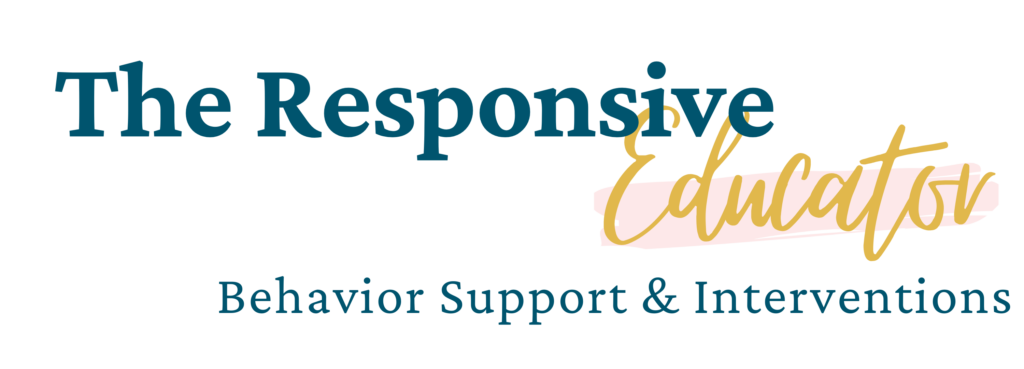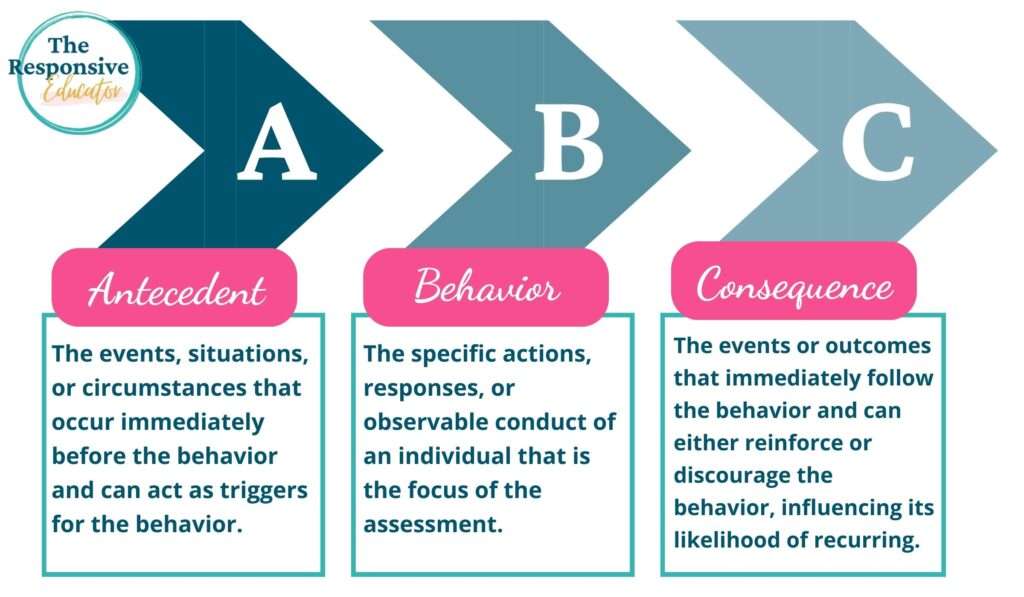

Understanding challenging student behavior is no small task, but what if there was a method to make sense of it all? That’s where the ABCs of behavior come in—Antecedent, Behavior, and Consequence. These three simple elements can unlock powerful insights to help educators better support their students.
By breaking behaviors into these components, you can start to see patterns that might otherwise go unnoticed. Let’s explore how the ABCs of behavior work and how you can use this information to make a meaningful difference in your classroom.
At its core, the ABC framework helps educators analyze behaviors in a structured way. Here is a brief introduction to antecedent behavior and consequence:
By tracking these elements, you can uncover the function of a behavior—whether it’s to gain attention, escape a task, or meet a sensory need.

The beauty of the Antecedent Behavior and Consequences framework (ABCs) lies in its simplicity. This framework provides a clear and objective way to observe and analyze behaviors, taking the guesswork out of behavior management. Here are just a few reasons to start using the ABC method:
For example, if a student frequently acts out during independent work, you might notice that the antecedent is the start of a challenging task. The consequence might involve being sent out of the room, allowing them to escape the task altogether. This pattern could point to an avoidance function, guiding you to strategies that build the student’s confidence in tackling tough assignments.
Using the Antecedent Behavior and Consequence (ABC) framework isn’t just about collecting data—it’s about putting it into action. By organizing and analyzing this information, you can create targeted interventions that truly work. Tools like behavior charts or graphing templates can make this process even easier, giving you a visual representation of your data at a glance.
Whether you’re tracking behavior trends over time, identifying environmental triggers, or measuring the impact of a new intervention, having a streamlined way to collect and analyze ABC data saves time and energy.
(If you’re looking for ready-to-use tools that simplify this process, be sure to check out my ABC Behavior Charting resource—designed to help educators like you collect, graph, and interpret behavior data with ease!)
When you take the time to break down behavior into its ABCs, you’re not just managing a classroom—you’re building a supportive environment where students can thrive. Understanding the “why” behind a behavior gives you the power to create meaningful, positive change.
Want to learn more about using the ABCs of behavior effectively? Dive deeper into From Data to Action: How to Use ABC Behavior Charting Graphs for step-by-step guidance and practical tips to transform your classroom.

Support your students’ individual needs with our exclusive Classroom Concerns Checklist.
Identify key concerns in areas like cognitive skills, communication, social/emotional behavior, and more.
Sign up now to receive instant access and valuable insights on addressing classroom concerns.
Don’t miss out, join our community today!